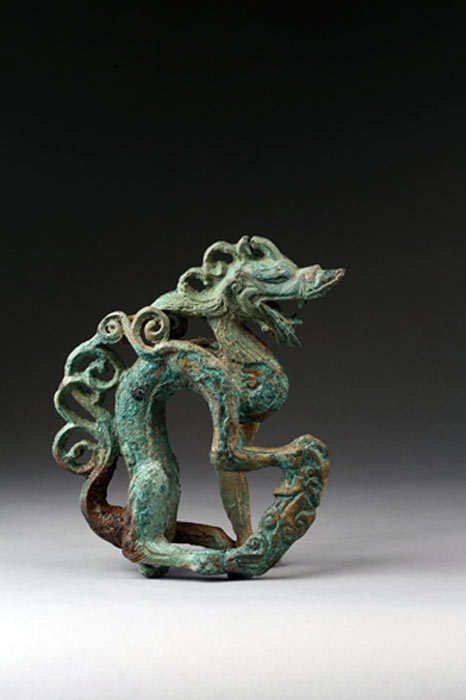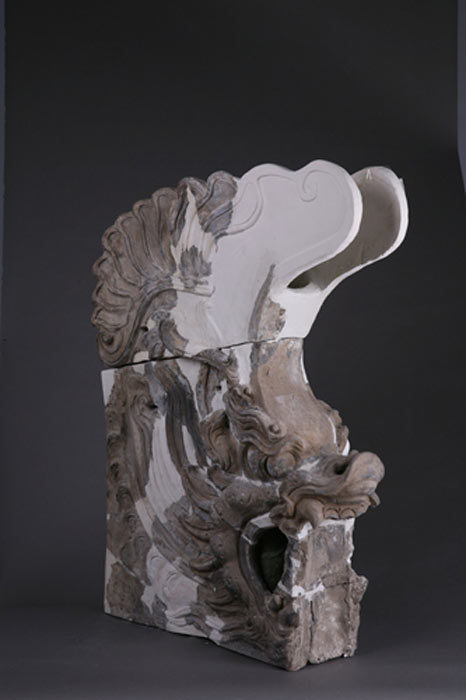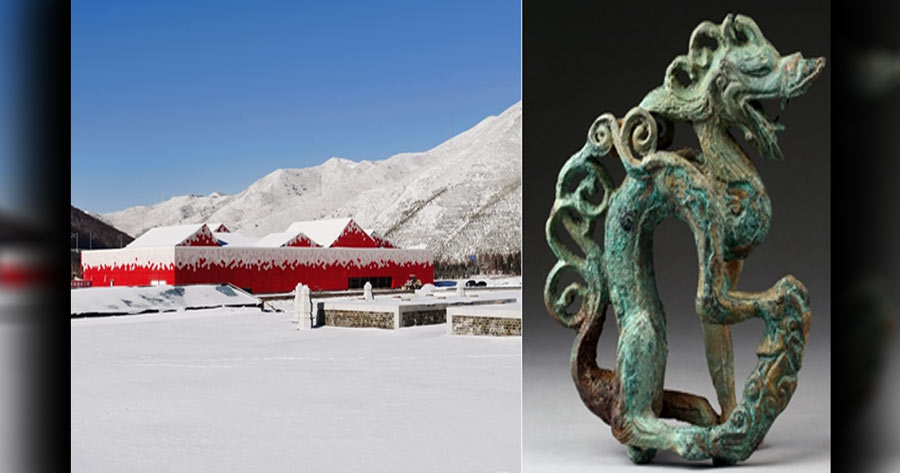800-year-old Palace and Artifacts Found at Beijing Olympic Village
Residents of Taizicheng village in Zhangjiakou City in northern China’s Hebei province, have always believed that the name of their village, meaning village of the crown prince, relates to the settlement's royal roots, according to the China Daily. Proving them right, archaeologists digging ahead of the construction of the Olympic village for housing athletes participating in the 2022 Winter Olympics discovered a 1202 AD summer palace from the Jin dynasty (or Jin Empire).
The Taizicheng Olympic village is 140 kilometers (87 miles) from Beijing, less than an hour by high-speed train. The city of Zhangjiakou is one of three zones hosting the 2022 Winter Olympics, along with central Beijing and the suburb of Yanqing. Taizicheng will be the site of the majority of ski and snowboarding events, reports Artnet.

A Bronze dragon figure unearthed from the Taizicheng Olympic village ruins. (Hebei Provincial Institute of Cultural Relics and Archaeology)
Taizicheng Olympic Village Construction Leads to Epic Find!
The site of the ancient Chinese palace at Taizicheng has been known to archaeologists since the 1970s, which included ruins from the Liao (916-1125 AD) and Jin (1115-1234 AD) dynasties. It was only in 2017, however, after China won the bid to host the 2022 Winter Olympics that serious exploration work was carried out at Taizicheng to ensure that nothing of historical value was damaged during the construction of the Olympic village there.
- From Myth to Reality: Olympia and the Ancient Greek Olympics
- An Intriguing Empire: The Lasting Impression of the Nomadic Liao Dynasty on Chinese Culture

The Taizicheng ruins in Zhangjiakou, Hebei Province, China, known as the Olympic village discovery of 2022. (Hebei Provincial Institute of Cultural Relics and Archaeology)
Talking to the Global Times, Zhang Wenrui, dean of Hebei Provincial Institute of Cultural Relics and Archaeology, said that the discovery of the palace came as a “big surprise” for Chinese archaeologists who were not prepared for the grand nature of the discovery.
Once the magnitude and great historical value of the find was realized, the archaeological team recommended that the Olympic village, which was to take up three-quarters of the Taizicheng ruins according to the original plan, be relocated. It was finally built east of the site and across the road from the ruins.
“Officials from the Beijing 2022 Organizing Committee told us the move has earned high praise from International Olympic Committee (IOC) President Thomas Bach,” said Huang Xin, head of the site's archaeology team and the deputy dean of the Hebei Provincial Institute of Cultural Relics and Archaeology, to the Global Times.

A dragon head artifact unearthed from the Taizicheng Olympic village ruins. (Hebei Provincial Institute of Cultural Relics and Archaeology)
Taihe Palace Unearthed from “Worthless Ruins”
Zhang told the Global Times that the team exploring the ruins initially believed that they were just some old and worthless buildings. However, they soon began uncovering priceless ceramics and building materials, as well as telltale architectural features.
The extensive remains they discovered included 67 building foundations and 14 roads, apart from moats and city walls. White-glazed Ding-ware porcelain, portions of dragon head sculptures and other ceramics were also found. They realized to their astonishment that what they were looking at was in all likelihood the Taihe Palace, built as the summer residence of Jin Emperor Wanyan Jing, whose reign lasted from 1189 to 1208 AD.
What makes the discovery even more significant is that this is the first Jin dynasty palace complex to ever have been unearthed. It will thus be of great value for scholars researching palace architecture during this historical period. The palace was the second most important location during the Jin dynasty period, after the capital city of Yanjing (Beijing), which was constructed in reign of Jin Emperor Wanyan Liang (1115-1234 AD).
Listed as one of the top 10 archaeological discoveries of 2018, the site was included in the eighth batch of national key cultural relic protection units in 2019. It was turned into an archaeological park in 2021 and some of the valuable artifacts found at the site are on display in an exhibition hall that opened on 31 December 2021.
- Irish Sporting Games: A Big Event 1,000 Years Before Greek Olympics
- Mythbusting Ancient Rome: Did Christians Ban The Ancient Olympics?

Cultural relics on exhibition at the Taizicheng site include a jade decoration with a gyrfalcon pattern. (Hebei Provincial Institute of Cultural Relics and Archaeology)
Separated from the new site of the Olympic village by just a road, the exhibits, it is expected, will be viewed by some of the participating athletes, thus contributing to their knowledge about the culture of the Games host country.
“We hope that some foreign athletes participating in the Winter Olympics, in compliance with the requirements of pandemic prevention and control, will be able to visit the exhibition with the approval of the IOC, so that they can enjoy and learn more about Chinese history and culture from the trip,” Huang told the Global Times.
Top image: The Taizicheng ruins in Zhangjiakou, Hebei Province, China, known as the Olympic village discovery of 2022. Left; Bronze dragon figure from Zhangjiakou. Source: Hebei Provincial Institute of Cultural Relics and Archaeology
By Sahir Pandey
References
Cascone, S. 2022. How the Beijing Olympics Helped Archaeologists Discover an 800-Year-Old Imperial Palace. Available at: https://news.artnet.com/art-world/beijing-olympics-helped-archaeologists-discover-imperial-palace-2068467
Chen Xi. 2022. 2022 Beijing Olympic Winter Games leads to major archaeological find. Available at: https://www.globaltimes.cn/page/202201/1245300.shtml
Wang Ru. 2022. Royal clues unearthed in excavation. Available at: https://global.chinadaily.com.cn/a/202201/11/WS61dcd127a310cdd39bc80398.html



















